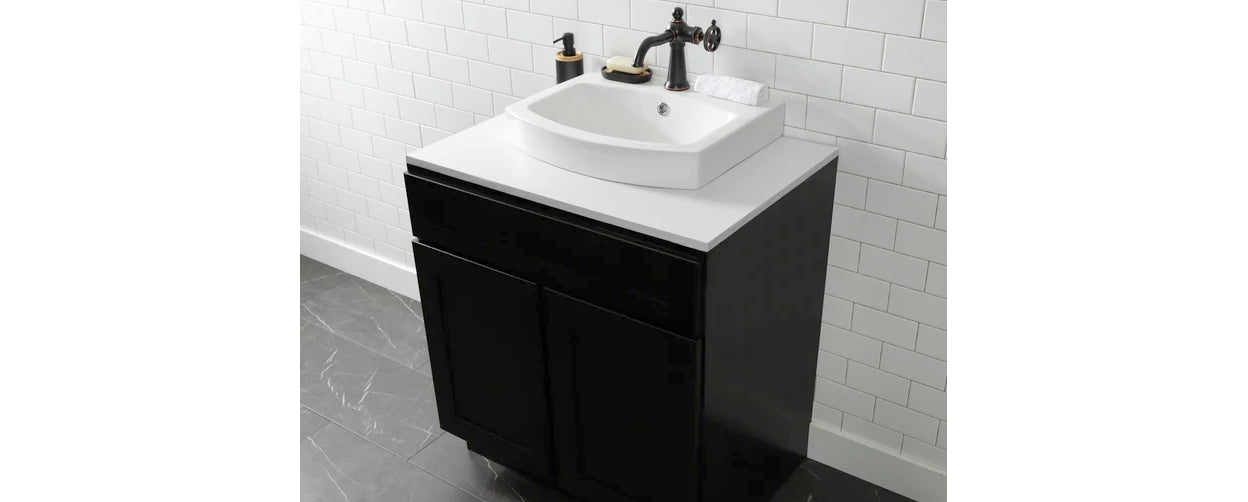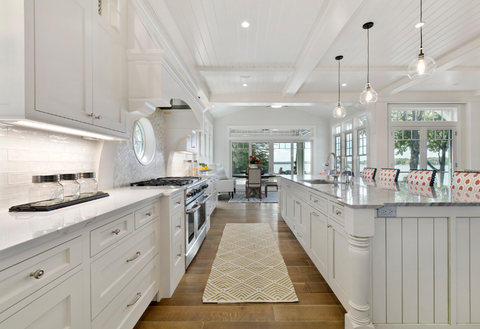Get PRO Pricing
Get [PRO] Pricing

Replacing a bathroom vanity gives the room an instant makeover and can completely change the look and feel of the space. It provides important storage space for bathroom essentials and covers the plumbing if you don’t like the look of exposed pipes.
Shopping for a vanity is a fun experience, as you get to explore a variety of styles, shapes, and sizes. You want something that’s durable and attractive, but finding a vanity that physically fits in the room is even more important. Before you begin your search, take a few minutes to learn more about bathroom vanity dimensions and why they matter.
A vanity is like other pieces of furniture and cabinets in that the product descriptions typically include the following dimensions:
In addition to the basic dimensions, some vanities have additional measurements to consider. These include the toe kick, counter, and backsplash. They can add more inches to the total dimensions, which can influence the buyer’s decision.

When measuring for a bathroom vanity, start with the basic measurements to find out how much room is available. This includes the width, height, and depth and indicates the maximum vanity sizes to consider.
In addition to the basic measurements, note the location of the plumbing and existing features like mirrors and neighboring doors. If a door is near the new vanity, make sure you know how far the door swings out.
Some people find it helpful to make a template of the vanity out of paper or cardboard boxes. Tape the paper to the wall and floor to see how well it fits in the space. This also allows you to see whether the vanity allows enough space for doors and drawers to open and how close the vanity is to electrical outlets.

Choosing a bathroom vanity that’s the right dimensions is important, but it’s not the only consideration to keep in mind. The vanity must be the right fit for the room and the people using it.
Ask the following questions as you narrow your options when shopping for a bathroom vanity.
The type of sink you plan to use in the bathroom will affect the style of vanity you can use. A vessel sink that rests on top of the counter doesn’t take up as much space inside the cabinet. However, the vanity may need enough room to hold a drop-in sink along with all the plumbing, which cuts into the amount of storage available inside the vanity.

The size of the vanity can affect the type of faucet you can install in the bathroom. A small vanity may not have enough space to accommodate a widespread faucet and may work best with a single-handle faucet. You also need to make sure there is enough space under the cabinet for the sink and plumbing.
Think about the needs of the people who will use the vanity the most. Will they be able to reach across the vanity to turn the water on and off? Small children can use a step stool to reach the counter, but they may find it challenging to reach across a deep vanity. Friends and family members who use a wheelchair or walker to move around should also be able to reach the items they need on the top of the vanity.

There are two sets of doors to consider: the doors on the vanity and the doors in the bathroom. In a narrow, galley-style bathroom, the vanity doors may come close to the opposite wall when they swing open. This can limit where you can position a clothes hamper or decorative pieces in the room. On the other hand, if the vanity is opposite a closet, the doors to both the vanity and the closet should open and close freely.
Think about how people walk through the bathroom when they use it. Note the position of the shower or tub, toilet, and doorway. Will one person be able to pass by someone brushing their teeth at the sink? Will the vanity obstruct part of the bathtub? A beautiful vanity that doesn’t fit your lifestyle quickly loses its luster.
Being able to see exactly where the plumbing fits within the vanity is one advantage of working with a paper template. If you have to cut holes into the vanity, you’ll be able to see where to make the cuts and how large the hole must be to accommodate the pipes. It’s also helpful to visualize how close or far away the vanity is from electrical outlets. If the bathroom was designed for a low vanity, a taller vanity might block the outlets.
 At Kingston Brass, you can choose from a selection of bathroom vanities and consoles that suit multiple design styles. They come in a range of finishes to coordinate with the existing design and complement new faucets and handles. You’ll also find additional parts and accessories to complete the look in the new space. From drains and aerators to shower curtain rods and towel racks, you’ll find what you’re looking for.
At Kingston Brass, you can choose from a selection of bathroom vanities and consoles that suit multiple design styles. They come in a range of finishes to coordinate with the existing design and complement new faucets and handles. You’ll also find additional parts and accessories to complete the look in the new space. From drains and aerators to shower curtain rods and towel racks, you’ll find what you’re looking for.
